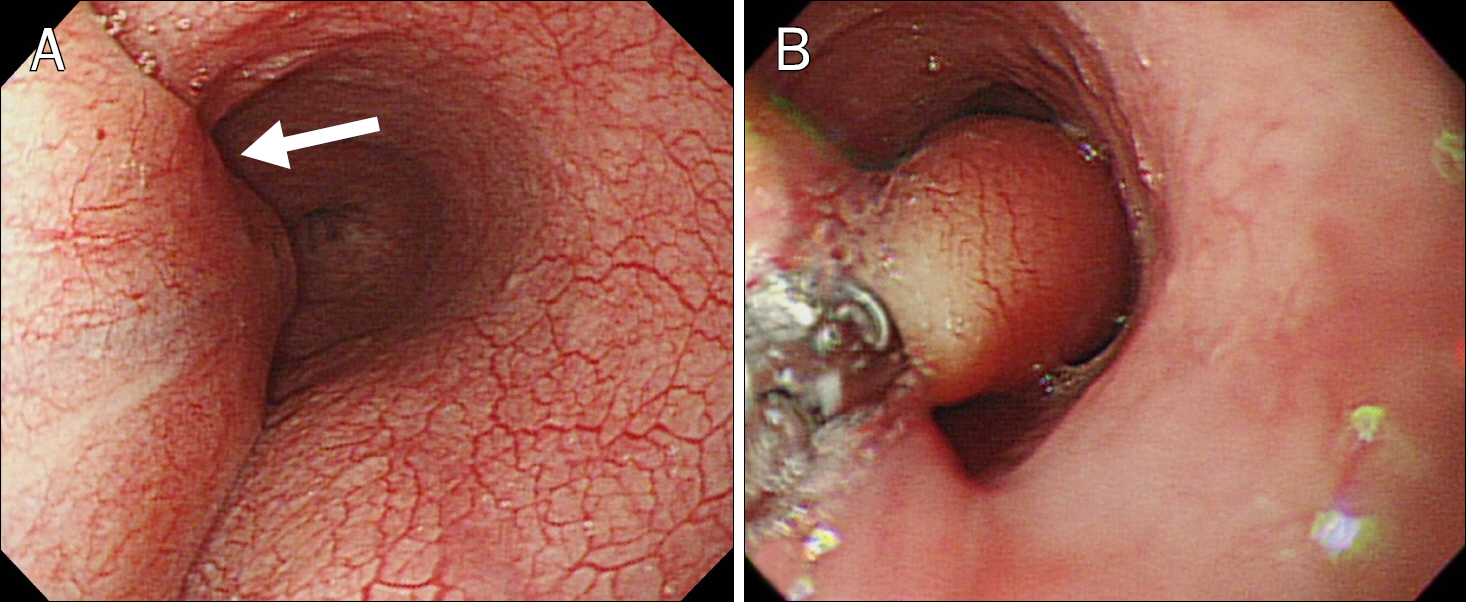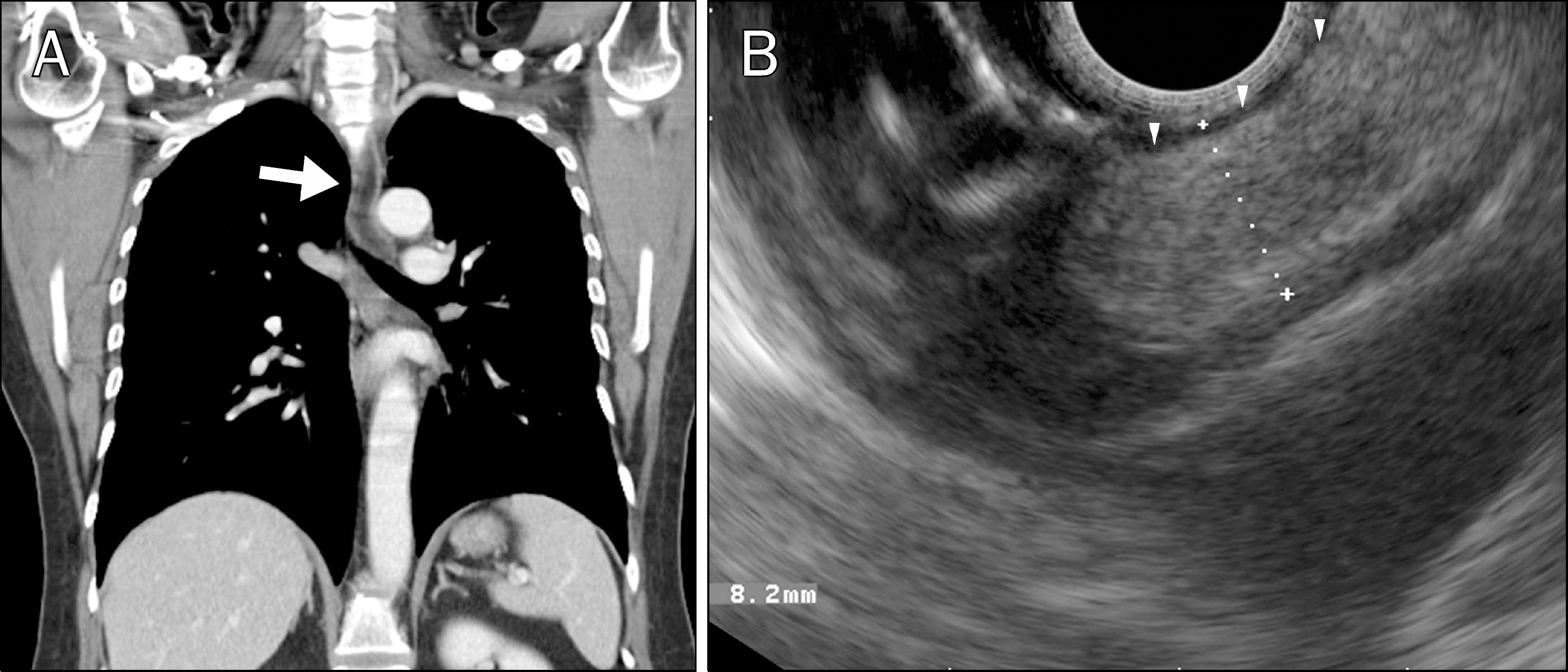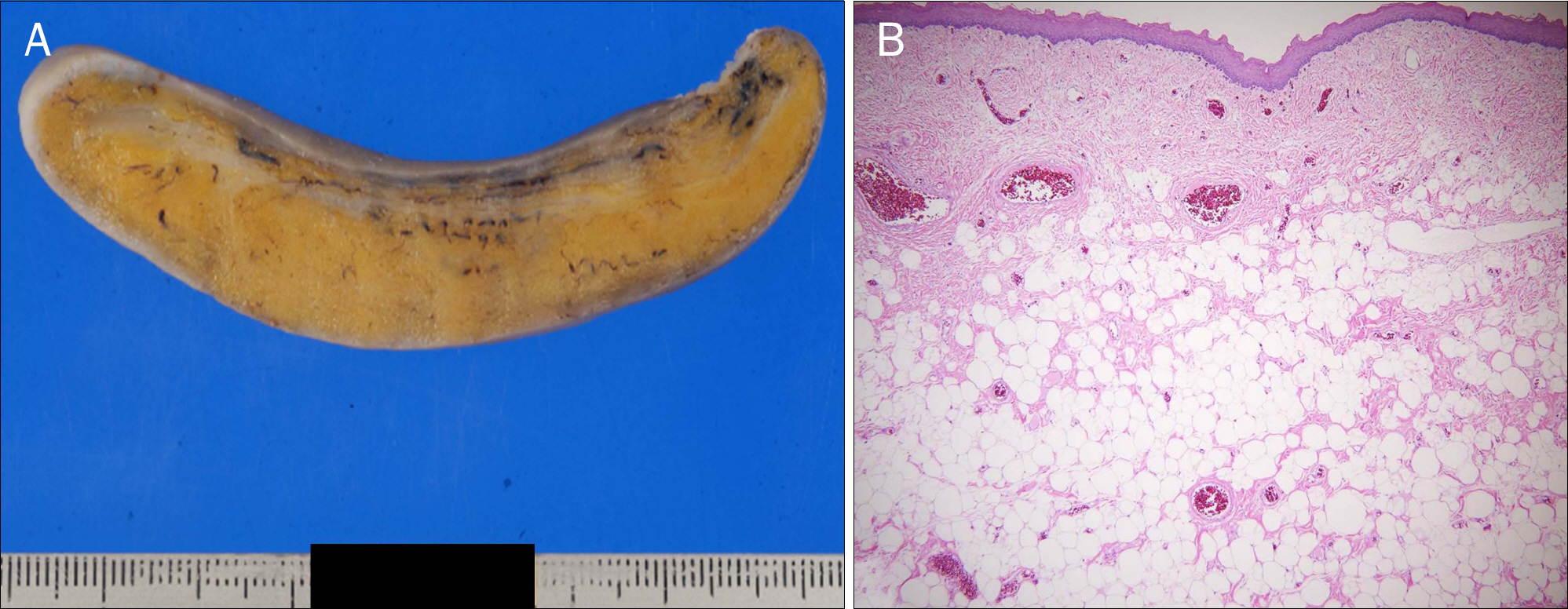Korean J Gastroenterol.
2016 Oct;68(4):210-213. 10.4166/kjg.2016.68.4.210.
Endoscopic Resection of a Giant Esophageal Lipoma Causing Sudden Choking
- Affiliations
-
- 1Department of Internal Medicine, Wonkwang University College of Medicine, Iksan, Korea. jipsinsa@naver.com
- KMID: 2383517
- DOI: http://doi.org/10.4166/kjg.2016.68.4.210
Abstract
- Most esophageal lipomas are discovered incidentally and are small and asymptomatic. However, large (>4 cm) lipomas may cause various symptoms, including dysphagia, regurgitation, or epigastric discomfort. We present a 45-year-old woman with intermittent sudden choking and globus pharyngeus. Upper gastrointestinal endoscopy and endoscopic ultrasound revealed an approximately 10.0×1.5 cm pedunculated subepithelial tumor in the upper esophagus, identified as the cause of her symptoms. A thoracic computed tomography scan revealed a fat attenuated longitudinal mass along the upper esophagus, suggestive of a lipoma. Endoscopic resection of the lesion was performed with a detachable snare to relieve her symptoms, and the pathologic findings were consistent with a lipoma.
MeSH Terms
Figure
Reference
-
References
1. Kang JY, Chan-Wilde C, Wee A, Chew R, Ti TK. Role of computed tomography and endoscopy in the management of alimentary tract lipomas. Gut. 1990; 31:550–553.
Article2. Feldman J, Tejerina M, Hallowell M. Esophageal lipoma: a rare tumor. J Radiol Case Rep. 2012; 6:17–22.
Article3. Cochet B, Hohl P, Sans M, Cox JN. Asphyxia caused by laryngeal impaction of an esophageal polyp. Arch Otolaryngol. 1980; 106:176–178.
Article4. Allen MS Jr, Talbot WH. Sudden death due to regurgitation of a pedunculated esophageal lipoma. J Thorac Cardiovasc Surg. 1967; 54:756–758.5. Hurwitz MM, Redleaf PD, Williams HJ, Edwards JE. Lipomas of the gastrointestinal tract. An analysis of seventy-two tumors. Am J Roentgenol Radium Ther Nucl Med. 1967; 99:84–89.6. Chung JJ, Kim MJ, Kim JH, Lee JT, Yoo HS, Kim KW. Imaging findings of giant liposarcoma of the esophagus. Yonsei Med J. 2003; 44:715–718.
Article7. Bhatia V, Tajika M, Rastogi A. Upper gastrointestinal submucosal lesions–clinical and endosonographic evaluation and management. Trop Gastroenterol. 2010; 31:5–29.8. Medici JR, Gomez NL, Wright FG, et al. Giant esophageal lipoma. J Gastrointest Surg. 2016; 20:473–475.
Article9. Cheriyan D, Guy C, Burbridge R. Giant esophageal lipoma: endoscopic resection. Gastrointest Endosc. 2015; 82:742.
Article
- Full Text Links
- Actions
-
Cited
- CITED
-
- Close
- Share
- Similar articles
-
- A Case of Giant Colonic Lipoma Showing Spontaneous Resolution after Endoscopic Partial Resection
- A Case of a Colonic Giant Lipoma Removed by Endoscopic Resection
- Case of a Giant Colonic Lipoma That Was Endoscopically Removed by Strangulation with Repetitive Endoloop Ligation
- Choking by Esophageal Foreign Body Impaction
- Endoscopic Resection of Giant Colonic Lipoma: Case Series with Partial Resection





